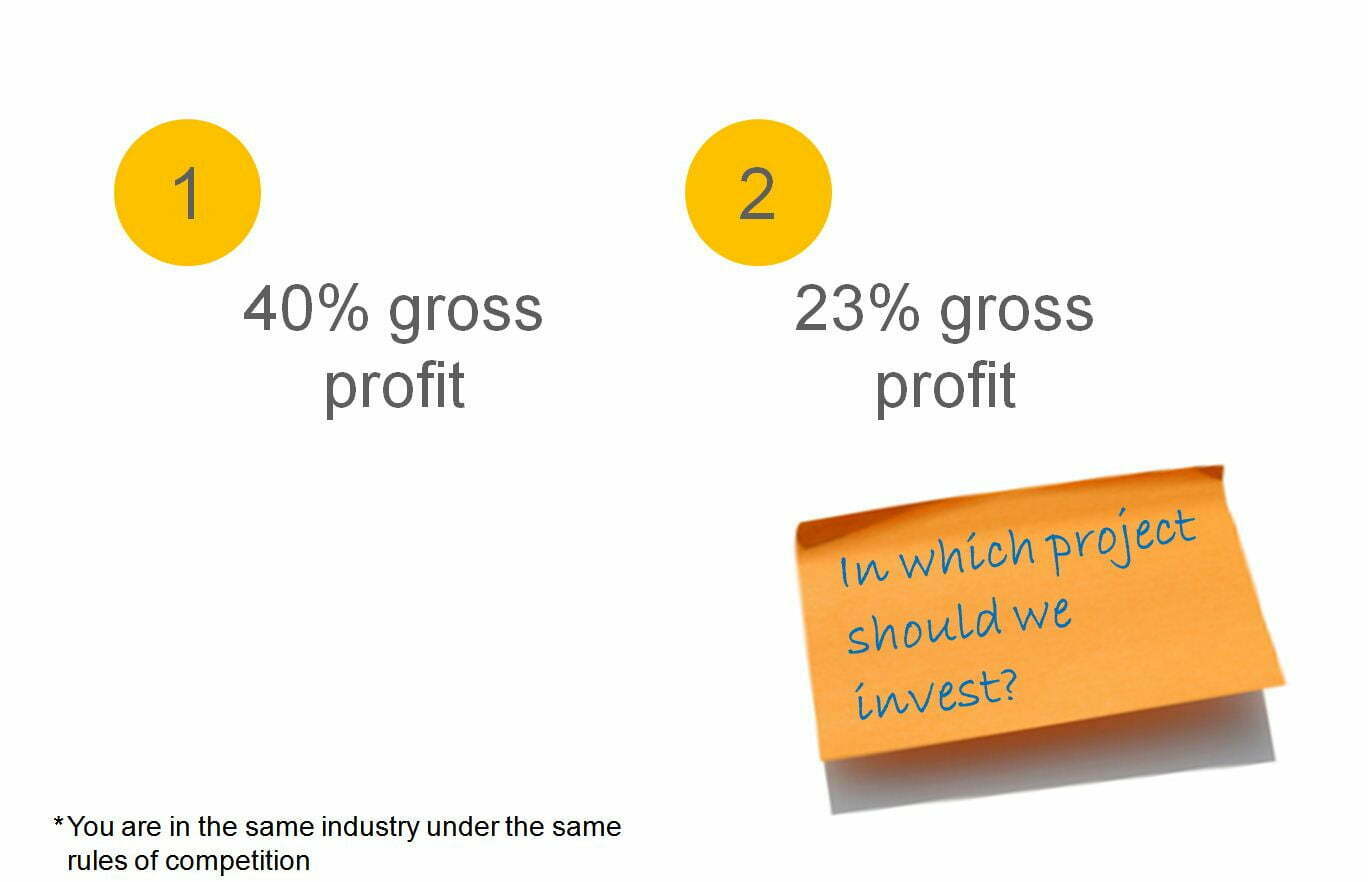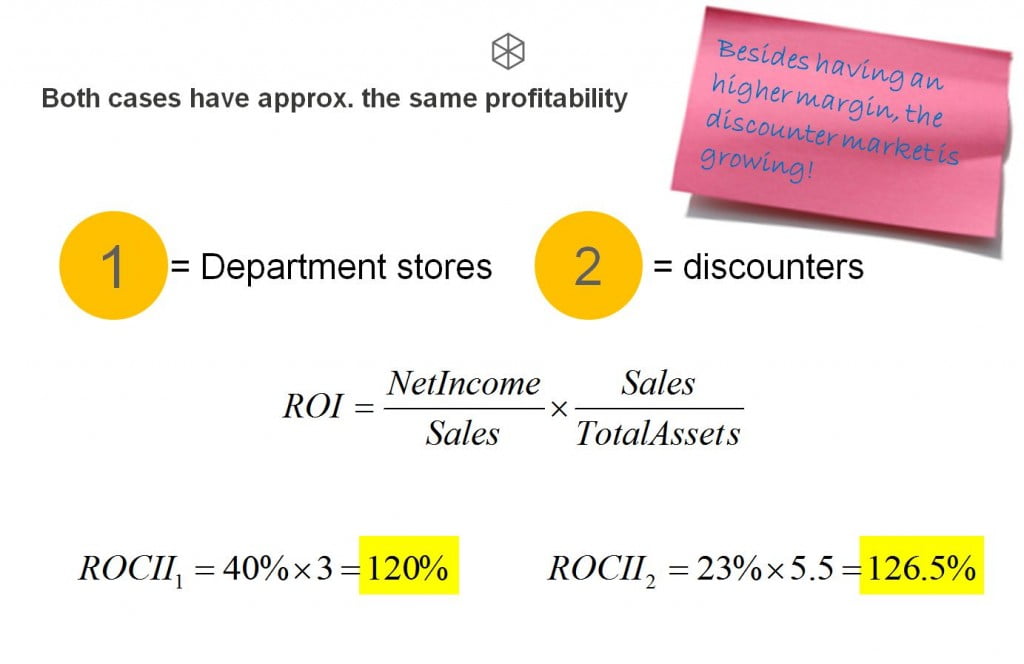Changing financials, changing economics, retailing and business model innovations
In the discussion on business model innovation the focus is often on the innovations regarding the value proposition or on the value architecture but it is interesting to look at the revenue model as well for starting points for an innovation.
Anders Sundelin in a recent blog post reflected on net working capital and the influence of the business model on it. I can only recommend his post to anyone. He shows how this important financial figure (net working capital) is influenced by the business model. Actually, almost all innovation in the retail industry change the economics of the industry. They all start by minimizing the working capital needed in the operation. Since the traditional business model in retailing is very capital intensive due to inventory, all disruptive innovations help to reduce the capital tied to inventory. And interestingly, at the same time as the working capital is decreased or in same cases, it even becomes negative the margins on sales go down.
One example: department stores vs. discounters
In the 1960s managers in department stores were having a good time. Department stores ( marked with a 1) went well and their economics were great with gross profits of 40% on sales. Imaging you would have worked at let’s say Karstadt, a German department store. You have a great idea. You believe that the future of retailing will be different and you have the idea a discounter retail outlet with limited stocks and less choice for the clients. You do your economics and you end up with a gross profit of 23% on sales (marked with a 2).
Would you have gone to your top managers and say: I have a great idea: It is called discounter: We will offer our customers less choice and we will be able to make a gross margin of 23% on sales. Do you think your top management would have supported this idea?
Definitely not. Why earn only 23% when in the traditional business you can earn 40%. And probably, you would have never brought such a proposal to the board since you wanted to climb the ladder into top management and such a silly idea would have spoiled all your chances.
Digging deeper into the economics
Ok, let’s do a bit of a deeper analysis of the case. First question, is gross sales the right figure. Even when a lot of firms use this figure it is not the right figure to look at. The better figure is return on capital employed or return on investment (ROI). And here comes in the working capital Anders has written about.
Traditional the definition of ROI is:
ROI (Return on Investment) = Profits / Total Assets
But with some transformation it becomes
ROI = Profit Margin x Asset Turnover
and with some more transformation it becomes
ROI = (Profits / Sales) x (Sales / Total Assets)
And then it becomes interesting. How often do you turn our assets over is important for the business. And this is exactly where innovation in retailing start. All retail innovation improved dramatically the turnover of the inventory (that is were in retailing the capital is employed in). And in retailing the working capital is the figure where the cost of the inventory is included. So a reduction in working capital and higher asset turnover the key to business model innovation in retailing.
And now, let’s go back to the example and do the maths with the asset turnover.
And the winner is: the discounter with lower gross profits
And after doing the math, the winner is not the business with the higher gross margin but the business with the low gross margin but with the higher asset turnover. In a department store you sell your inventory three times a year, making 3 times 40%. A discounter makes 23% but it turns the inventory over 5.5 times. So the clear winner is the discounter.
But bad luck for the managers of the department stores. For them, it was unbelievable to earn only 23% on their sales. They rejected the case or did never receive a proposal like this. For the startups like Aldi the business case worked well. Today, Karstadt is bankrupt, and Aldi is the king of retailing.
And all this because of some changing economics. So what can we learn. Always look at the economics or revenue model of a business model and identify the drivers of profitability. They are often not the once you think of. And for the others who are not firm in economics, the Dupont System of Financial Control. It is from 1919 but still very valuable to understand the changing economics of a business.
The Dupont System

in German, click to enlarge. The slides are taken from a lecture I gave at the Leuphana University Lüneburg for Executives of the OTTO Group. Figures are taken from Christensen, Raynor (2003), The innovator‘s solution, p. 106



I agree totally. The notion of customer experience and customer services as a key design objective sounds simple, but in fact it is very revolutionary. We are still stuck in the industrial age, even for services oriented industries like finance. Lots of new innovation to do here.
********
oliver
@kay. Zara is an excellent example in retailing. You can see Zara as a logistics company that is keen to reduce inventory costs. To do so, they have a very distinct business model parts you have mentioned. Important for them is that is to reduce their lead time between seeing what is being works in their shops and production. Therefore they had to abandon the traditional way of production of cloths in China. China might be cheaper in production but your time to react to changing market demands is more important than unsold clothes you have purchased at a very low price. I have written a case study on Zara 5 years ago but it is in German.
The charming part of a business model innovation is that you can also change the economics of the business to your advantages. One prime example is the largest German brewery. They have never done advertising or spent anything on marketing. All they do is to brew a reasonable beer and get it shipped as cheap as possible to retail outlets. Actually, they are more of a logistics company with their own trucks than a traditional beer brewery with hip and expensive ads. They are called Öttinger. You do not know them? No problem, but you will find their beer at a good price in almost all German supermarkets and that is what counts for them. Cheers!
Great post Patrick. I am also impressed by the Spanish retail clothing giant Zara that links its designers to the retail store managers so that the designers can quickly change the merchandise based on what is and is not working in the stores. This reduces unsold inventory, helping to improve both margins and asset turns. Other neat revenue model innovations I have seen include renting tools (versus selling them outright) and cloud-computing subscription fees versus outright sale of software. All the strategy decisions underlying a business as you know are interdependent. Seek the innovations that create the most profitable and defensible market position. Good day, K